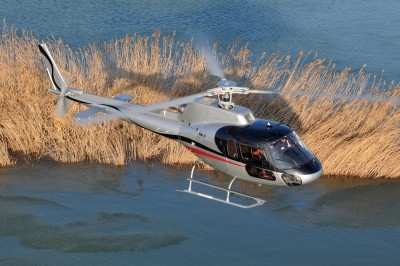Corrects Terminology On Previous EAD
This superseding Emergency Airworthiness Directive (AD) 2015-22-53 is being sent to owners and operators of Airbus Helicopters Model AS350B3 helicopters to correct an error in terminology and a defect in recording compliance in Emergency AD 2015-22-52.

On October 28, 2015 the FAA issued Emergency AD 2015-22-52 for Airbus Helicopters Model AS350B3 helicopters with a dual hydraulic system that prohibited performing the yaw load compensator check (collective switch) during preflight procedures and instead required performing it during post-flight procedures. Emergency AD 2015-22-52 also required the yaw servo hydraulic switch (collective switch) to be in the “ON” (forward) position before taking-off. The actions in Emergency AD 2015-22-52 the were intended to prevent takeoff without hydraulic pressure in the T/R hydraulic system, loss of T/R flight control, and subsequent loss of control of the helicopter.
Emergency AD 2015-22-52 was prompted by two accidents and one incident of Airbus Helicopters Model AS350B3 helicopters with a dual hydraulic system installed. From preliminary investigations, loss of tail rotor (T/R) control during take-off was evident in each event. Each event experienced a counterclockwise rotational yaw immediately after takeoff. It was also noted that the anti-torque pedals felt jammed or locked in the neutral position by the pilots in the two non-fatal events. The conditions in the events are indicative of takeoffs without hydraulic T/R assistance caused by a lack of pressure in the T/R hydraulic system. When taking off without T/R hydraulic assistance with the switch on the collective grip in the “OFF” (aft) position, the yaw load compensator remains discharged and degrades the T/R hydraulic system, which significantly increases the pilot T/R control load and prevents sufficient T/R thrust for takeoff.
Based on the accidents and incident, the European Aviation Safety Agency (EASA), which is the Technical Agent for the Member States of the European Union, issued EASA AD No. 2015-0178, dated August 26, 2015, to correct an unsafe condition for Airbus Helicopters Model AS 350 B3 helicopters, equipped with a dual hydraulic system identified as modification OP 3082 or OP 3346. EASA advises of a perceived loss of T/R control that mimics jamming during take-off if the T/R hydraulic preflight checks are not performed in accordance with the checklist in the Rotorcraft Flight Manual (RFM). According to EASA, performing the T/R hydraulic preflight checks improperly may result in reduced function of the T/R hydraulic system, thereby significantly increasing the T/R control load for the pilot.
After Emergency AD 2015-22-52 was issued, the FAA received comments noting an error in terminology and a defect in reporting compliance that resulted in confusion in how to comply with the Emergency AD. Therefore, the FAA are superseding Emergency AD 2015-22-52 to clarify the requirements.
Specifically, the FAA referred to the collective switch for the yaw load compensator check, when the FAA should have referred to the ACCU TST switch. The FAA also omitted a method of recording compliance.
This helicopter has been approved by the aviation authority of France and is approved for operation in the United States. Pursuant to our bilateral agreement with France, EASA, its technical representative, has notified us of the unsafe condition described in the EASA AD. The FAA is issuing this Emergency AD because we evaluated all information provided by EASA and determined the unsafe condition exists and is likely to exist or develop on other helicopters of the same type design.
(Image from file)
 ANN's Daily Aero-Term (04.24.24): Runway Lead-in Light System
ANN's Daily Aero-Term (04.24.24): Runway Lead-in Light System ANN's Daily Aero-Linx (04.24.24)
ANN's Daily Aero-Linx (04.24.24) Aero-FAQ: Dave Juwel's Aviation Marketing Stories -- ITBOA BNITBOB
Aero-FAQ: Dave Juwel's Aviation Marketing Stories -- ITBOA BNITBOB Classic Aero-TV: Best Seat in The House -- 'Inside' The AeroShell Aerobatic Team
Classic Aero-TV: Best Seat in The House -- 'Inside' The AeroShell Aerobatic Team Airborne Affordable Flyers 04.18.24: CarbonCub UL, Fisher, Affordable Flyer Expo
Airborne Affordable Flyers 04.18.24: CarbonCub UL, Fisher, Affordable Flyer Expo



